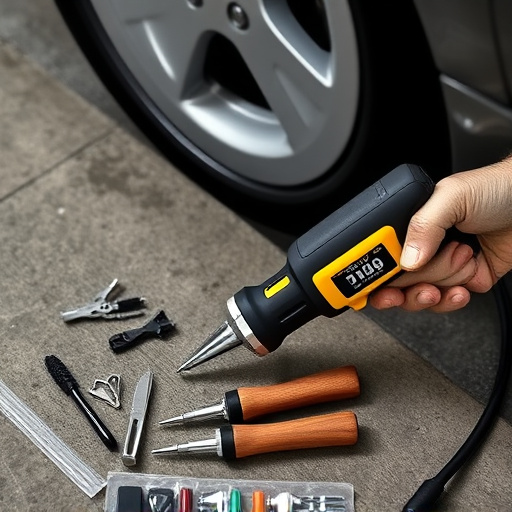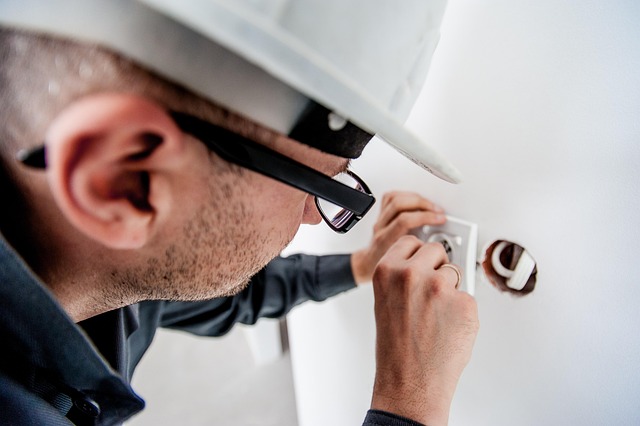Delayed or absent repair status updates harm customer satisfaction, especially for critical repairs like auto glass or paint jobs. Timely updates build trust, maintain loyalty, and ensure smooth service experiences. They enhance operations by facilitating resource allocation, preventing bottlenecks, and improving overall efficiency, benefiting both customers and mechanics.
In today’s fast-paced world, timely communication is key to maintaining customer satisfaction. When it comes to repair services, delaying status updates can have significant repercussions. This article explores the effects of delayed repair status updates on customer experience, operational workflow, and team collaboration. Understanding these impacts is crucial for businesses aiming to enhance efficiency, foster trust, and deliver exceptional service. By examining these aspects, we uncover why prompt and transparent repair status updates are essential in every industry.
- Delayed Updates: Impact on Customer Satisfaction
- Operational Efficiencies at Stake
- The Ripple Effect Across Teams
Delayed Updates: Impact on Customer Satisfaction

Delayed or absent repair status updates can significantly impact customer satisfaction, especially for those waiting on critical repairs like auto glass replacements or vehicle paint repairs. Customers expect transparency and regular communication throughout their service journey, ensuring they feel informed and at ease about their vehicle’s progress. When updates are scanty or late, it creates uncertainty, fostering anxiety and dissatisfaction.
Imagine a classic car restoration project where every detail matters. Delayed status updates can disrupt the entire process, causing delays in planning, rescheduling appointments, and even affecting other aspects of the restoration. Customers may feel their time and trust are being disrespected, leading to a breakdown in the service provider-customer relationship. Regular, timely repair status updates are crucial for building trust, maintaining customer loyalty, and ensuring everyone involved remains on the same page.
Operational Efficiencies at Stake

When it comes to efficient operations within any organization, timely communication is key. In the context of vehicle repair services, this is particularly crucial. Repair status updates play a vital role in keeping all stakeholders informed and ensuring smooth operations. Delays in providing these updates can significantly impact the overall efficiency of the entire process.
For instance, in cases of hail damage repair or car dent repair, prompt status notifications allow for better resource allocation. Without these updates, managers might struggle to assess the workload, leading to potential bottlenecks. This delay can extend beyond just operational inefficiencies; it may also cause customer dissatisfaction, as individuals waiting for their vehicles to be repaired deserve regular, accurate information regarding their vehicle’s progress.
The Ripple Effect Across Teams

When repair status updates are delayed, it creates a ripple effect across all teams involved in the process, from the customer service department to the mechanics and even management. In an auto body shop or car restoration facility, timely communication is key to efficient workflow management. A delay in status updates can lead to misaligned expectations among customers, who may feel ignored or frustrated by the lack of progress on their vehicle’s repair.
This disruption has a direct impact on the entire operation. Mechanics, depending on these updates for planning and resource allocation, might find themselves waiting for critical information that could alter their work schedules and priorities. This delay can cause inefficiencies, such as unnecessary downtime or delays in completing other tasks, impacting not just individual projects but also affecting the overall productivity of the auto repair shop.
Delaying repair status updates can significantly impact customer satisfaction, operational efficiencies, and overall team coordination. In today’s fast-paced digital era, prompt communication is key to fostering trust and ensuring seamless service delivery. By implementing efficient systems for repair status updates, companies can revolutionize their approach to customer service, mitigate potential issues, and create a positive ripple effect throughout their operations.














